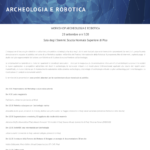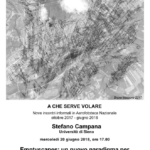The general objectives of the project can be summarized as follows:
1.To place the experience so far gained in Tuscany and Lazio in a broader Mediterranean and European context through the review and analysis of information about relevant case studies elsewhere. Particular attention will be paid to issues concerning the apparent ‘invisibility’ of important elements within archaeological landscape and the potential impact of strategies based on the use of ‘traditional’ methods in an integrated partnership with geophysics, remote sensing, geo-archaeology and bio-archaeology to allow archaeologists to detect previously ‘invisible’ parts of the ancient landscape. This will involve investigating both contrasts and similarities between urban and rural environments in the application of these approaches.
2.To confront and hopefully fill the gap between palaeo-environmental history and anthropic evidence by integrating environmental studies within the methodological framework of Italian landscape archaeology.
3.To focus on archaeological analysis and GIS-based interpretation in a multi-scale landscape context. This is a key element because of the danger that data-collection might become increasingly divorced from historical debate unless a healthy dialogue can be promoted between those at the cutting edge of methodological development and those using the collected evidence to address archaeological questions (Johnson and Millett 2013). Moreover, we need to keep in mind that apparent patterns in the archaeological data are often scale-dependent.
4.To improve understanding through the application of new technologies with particular regard to:
•Evaluating the influence of these technologies in detecting changing archaeological patterns across time, from pre- and proto-history through the classical period and on into the Middle Ages and early modern period.
•Improving understanding of the likely returns from differing methodologies applied in a variety of contexts, with the aim of formulating better and more holistic research strategies.
•Improving planning and conservation strategies and policies in Italy. This could have a potentially tremendous impact on the quality of heritage conservation but also on business and employment in the Mediterranean area.
5.The current situation in Italy and most of the Mediterranean area needs to be radically changed by developing and applying new and holistic research strategies, which can explore the whole landscape as a continuum (on this point see Bintliff 2000). Just as from the 1970s onwards open-area excavation and associated changes in the nature and integration of archaeological documentation have transformed our understanding of both urban and rural domestic activity, so multi-faceted exploration of contiguous blocks of the central Italian landscape, combining established and innovative archeological and environmental research, will fundamentally change understanding of the studied landscapes. Intensive and holistic work of this kind will make it possible to address new and more sophisticated questions about Mediterranean landscapes than are accessible within the present methodology, relying as it does on fragmentary and potentially distorted datasets.
Among other results, achieving a realistic view of the archaeological continuum can be expected to push archaeological research away from a reactive and towards a proactive approach, introducing a new analytical level that might best be defined as ‘mid-scale analysis’ – representing a bridge between the more traditional ‘micro scale’ of archaeological excavation the ‘macro scale’ of regional survey (defined in geography as small-scale, generally thought of as 1:50 000 or higher), both of which suffer from the risk of missing relevant evidence and relationships. Micro-, mid- and macro-scale studies are obliviously complementary, and all three are necessary for a comprehensive interpretation of landscape and settlement developments over time (Campana 2009).

